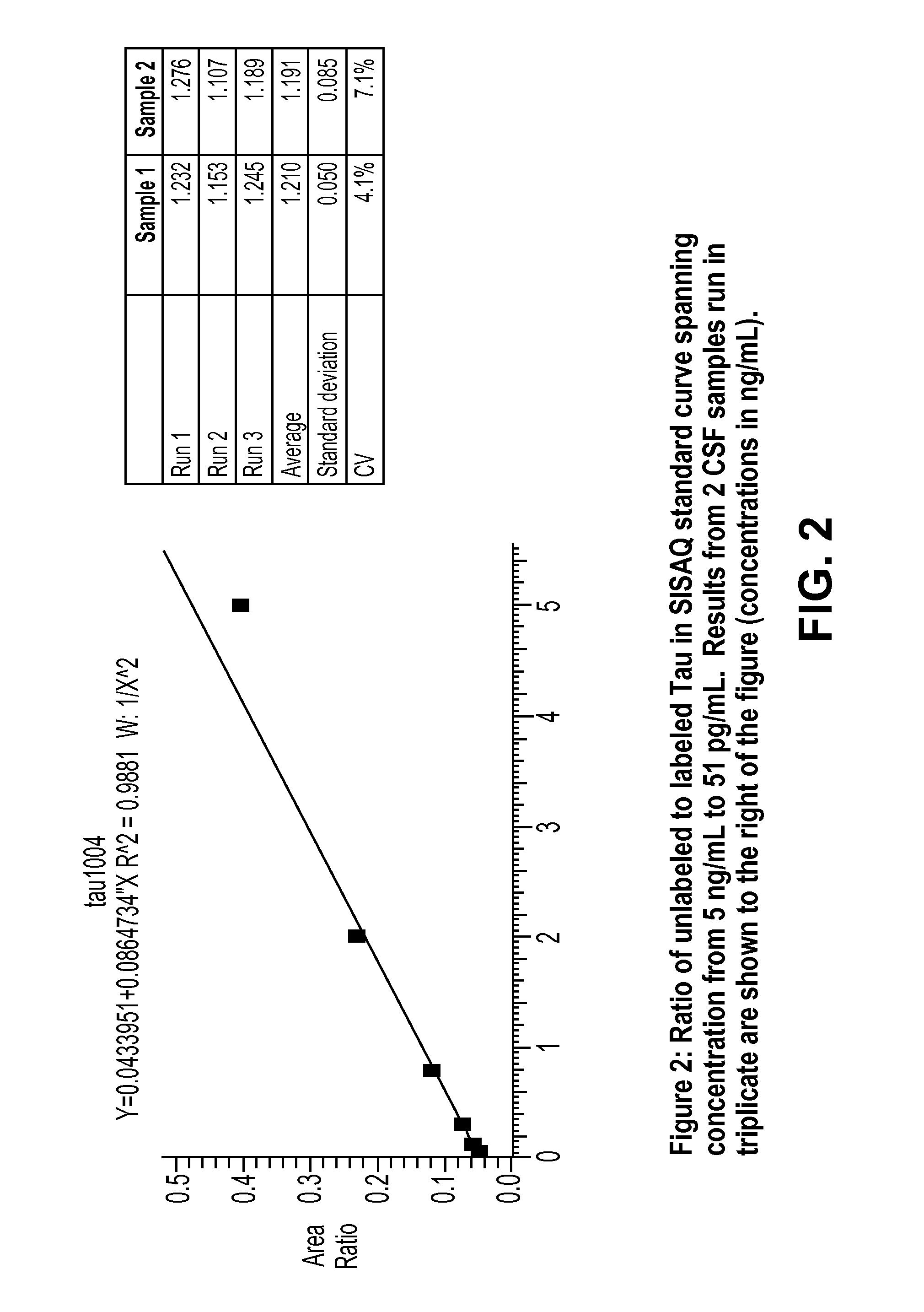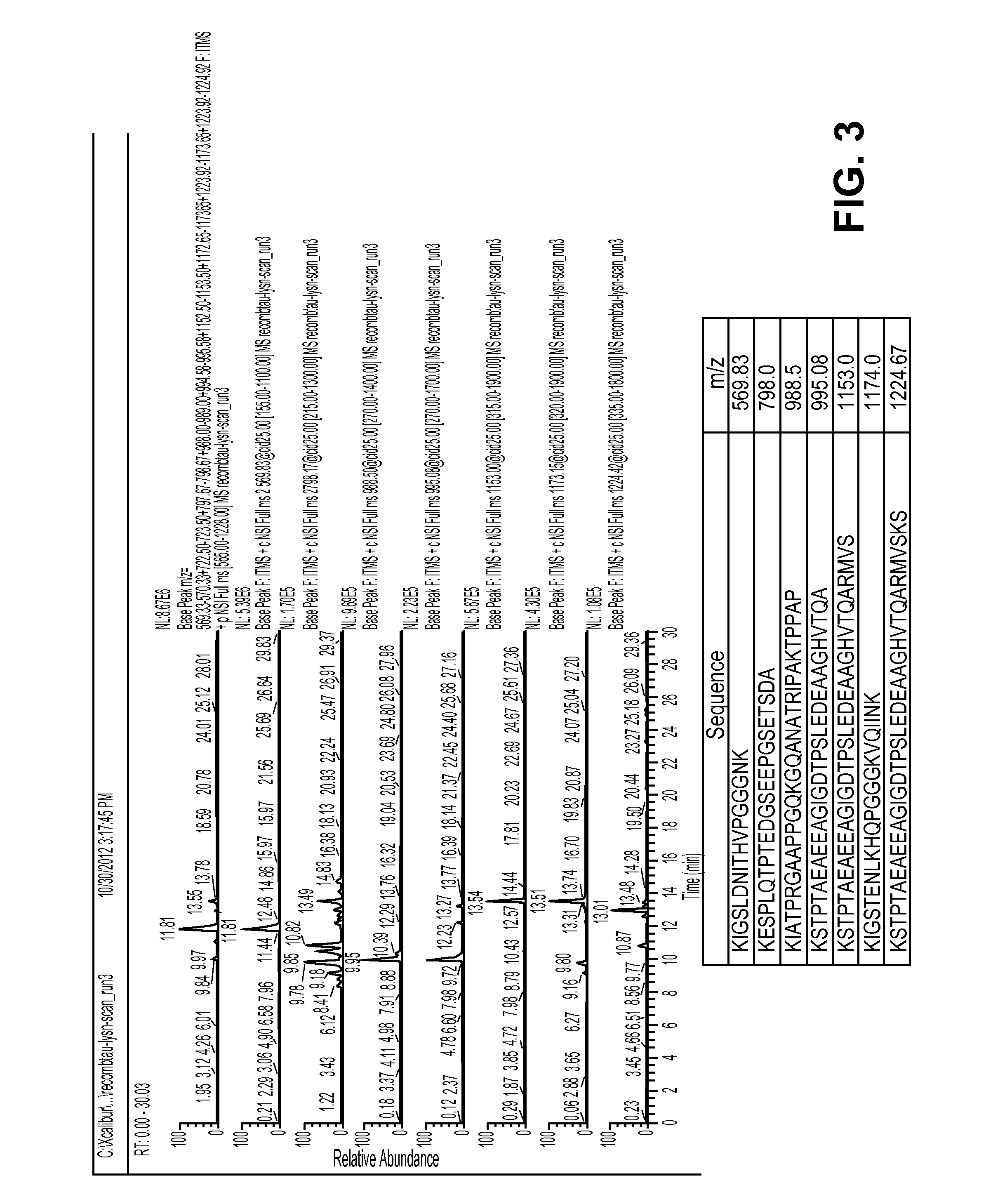Methods for Measuring Concentrations of Biomolecules
a biomolecule and concentration technology, applied in the direction of instruments, assay labels, material analysis, etc., can solve the problems of increasing public health problems, loss of memory, cognitive function, independence and death, and disease that takes a heavy personal and financial toll on the patient, the family, and society
- Summary
- Abstract
- Description
- Claims
- Application Information
AI Technical Summary
Benefits of technology
Problems solved by technology
Method used
Image
Examples
example 1
Metabolic Labeling of Tau
[0080]This example demonstrates that cells producing Tau will metabolically incorporate a stable isotope labeled amino acid into newly synthesized Tau.
[0081]We grew cells in normal media until almost confluent. We then added fresh media and let the cells condition the media for 24 hours. Then we spiked in 13C6 leucine into the media at a final ratio of 1:1 for unlabeled to labeled leucine. Media was collected at various time points after addition of 13C6 leucine and Tau was isolated from the media and analyzed using our standard IP / MS protocol. Ratio of labeled to unlabeled Tau was plotted against time.
[0082]This illustrates the feasibility of metabolically labeling Tau using 13C6 leucine. This is critical for showing that SILK-Tau is feasible as well as showing that SISAQ quantitation peptides can be made in cells.
example 2
Quantitation of Tau by SISAQ
[0083]13C6 leucine labeled Tau was used as Quantitation Standard and spiked into a standard curve of samples containing concentrations of Tau ranging from 5 ng / mL to 51 pg / mL. In addition the Quantitation Standard was spiked into CSF from two different individuals. Tau was isolated from the samples using immunoprecipitation and then digested with Trypsin and analyzed by mass spectrometry. The ratio of unlabeled Tau to Quantitation Standard was calculated for all samples and a standard curve generated. The standard curve was linear in the range tested (5 ng / mL to 51 pg / mL) and was used to calculate the concentration of Tau in the CSF samples. The concentration of Tau in the CSF samples was around 1.2 ng / mL and the CV on triplicate measures of Tau concentration was 4% for one CSF sample and 7% for the other CSF sample.
[0084]This illustrates the feasibility of using stable isotope labeled Tau as a quantitation standard and relating the ratio of unlabeled to ...
PUM
 Login to View More
Login to View More Abstract
Description
Claims
Application Information
 Login to View More
Login to View More - R&D
- Intellectual Property
- Life Sciences
- Materials
- Tech Scout
- Unparalleled Data Quality
- Higher Quality Content
- 60% Fewer Hallucinations
Browse by: Latest US Patents, China's latest patents, Technical Efficacy Thesaurus, Application Domain, Technology Topic, Popular Technical Reports.
© 2025 PatSnap. All rights reserved.Legal|Privacy policy|Modern Slavery Act Transparency Statement|Sitemap|About US| Contact US: help@patsnap.com



